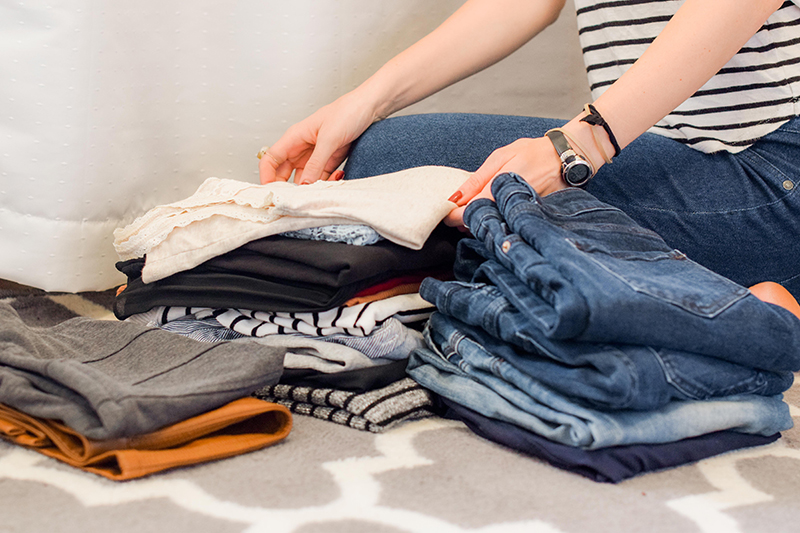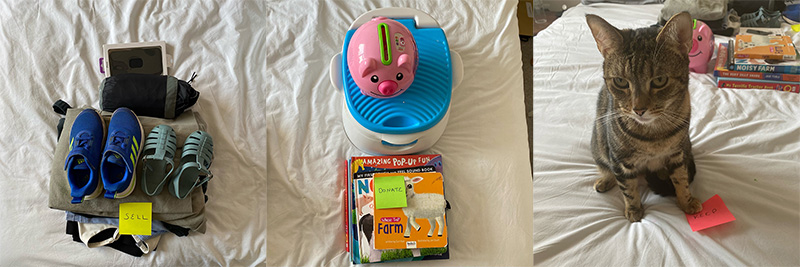
With the longer days and a much-needed dose of vitamin D, often comes the desire to change our environment to reflect the lightness and brightness of spring. During the winter months, clutter can feel almost cosy, but as we start to feel more energised, many of us start looking to clear some space in our surroundings - hence the ‘big spring clean’. Getting rid of unnecessary stuff can really lift your mood and contribute to your general wellbeing, but it can also help improve your financial wellbeing too. With PayPal’s recent Financial Wellness Study1 finding that over half (58%) of millennials are planning to change their spending habits in light of the current cost-of-living crisis, it’s certainly something to consider.
There is a saying in the minimalist sphere, which you might have seen splashed across social media. It goes: ‘All that clutter in your home used to be money. And all that money used to be time.’ Being surrounded by material clutter can serve as a reminder of buyer’s remorse or wasted time and money, and it can feel like we’re being stifled by purchasing decisions from the past that we’ve gone on to regret. You don’t have to be a minimalist to benefit from this insight - even if you prefer lots of colour and design features, too much clutter can feel suffocating.
The good news is that, in clearing out some of that excess stuff, we can not only rid ourselves of those unwelcome reminders and that claustrophobic feeling, we can even make a bit of our money back and put it towards a financial goal. PayPal’s report found that millennials have on average £326 left at the end of the month and nearly half (48%) find it possible to save, so every little step can help get you closer to your goal. Plus, with over half (54%) of millennials planning on cutting down shopping due to the cost-of-living crisis, there’s added incentive to keep our homes clutter free.
Here are the steps I take in my spring clean process, that you could follow to help give your environment and your financial wellbeing a boost:
Empty everything out
Unfortunately, in order to evaluate everything you have, things might need to get worse before they get better. As well as emptying cupboards and drawers, make sure that you clear out all of those hidden clutter traps too, like under the bed, behind furniture and round the back of doors. These might not be completely obvious at first, but I find that having that clutter constantly in my peripheral vision adds to my stress levels.

Don’t panic!
Once everything’s out in the open, it’s easy to feel overwhelmed. Just remember that once you get past this pain point, things will start to feel a bit easier and clearer. If you need to, take a break and have a cup of tea or a short walk before tackling the mess.
Invest in some new storage
If things seem to be scattered all over the place with no clear system, you might need to invest in some boxes and baskets to instil a sense of order in your space. When filling your storage, try to keep things you use all the time at the top or the front, with things you use less frequently to the bottom or back.
Be honest with yourself
As you’re sorting through your possessions, try to be honest with yourself about what you want and need to keep. It’s fine to have a few keepsakes from certain times of your life, but if you’re holding onto stuff that you haven’t looked at in years, it might be worth letting go. Similarly with clothes, shoes and accessories - make an honest assessment about what you’re actually going to wear, what fits and what doesn’t.
Sort into piles
Clear a big space, and sort your things into piles - to recycle, to keep, to donate and to sell. You could make a list of criteria for each category, to make the sorting process easier.

Photograph and list your items for sale immediately
It’s so easy to give up at the ‘piles of stuff’ stage, and then be left with heaps of stuff that slowly makes its way back into your cupboards as you decide to try on that dress one more time, or your kids suddenly remember that that toy is actually their favourite after all. Then , you get frustrated that your home is just as cluttered as it always was, and your sales fund is empty. Try to include the photographing and listing process as part of this big session, as well as sorting and labelling items for donation, then putting them straight in the car or in the hall to take on your next trip out.
Choose your selling platform according to your items
I’ve learned that different items sell best on different platforms - some are better for furniture, some for children’s items and some for clothes and shoes. Whichever platform you choose, your item will sell better if you take good quality, well-lit photographs, and include a detailed description. If your item will need to be posted, consider stocking up on envelopes and jiffy bags so that you can get them sent off right away.
Collect money from your sales in one place
Even when selling across different platforms, it’s a great idea to collect the money all in one pot, so that you can see the full impact of your sales and be purposeful with the funds – 43% of those with a side hustle are already doing this. Using PayPal is easy to receive payments in a safe and cashless way. You’ll also be able to see the money growing with each sale and have clear total of the money you’ve made from the process.
Give your sale proceeds a purpose, and enjoy your new space
Decluttering is hard work, so don’t let that hard-earned money disappear into your daily expenses. If you used PayPal when selling, you can either keep it in your PayPal wallet as summer fun money or transfer it to your bank account and savings to go towards one of your financial goals. Look after your new-found space in your clutter-free home, and try not to let it build up again too quickly.
1 PayPal’s Gen Z Financial Wellness Study survey of 1,000 UK Gen Z adults (aged 18 – 25) and 1,000 Millennials (aged 25-41) conducted by OnePoll in April 2022